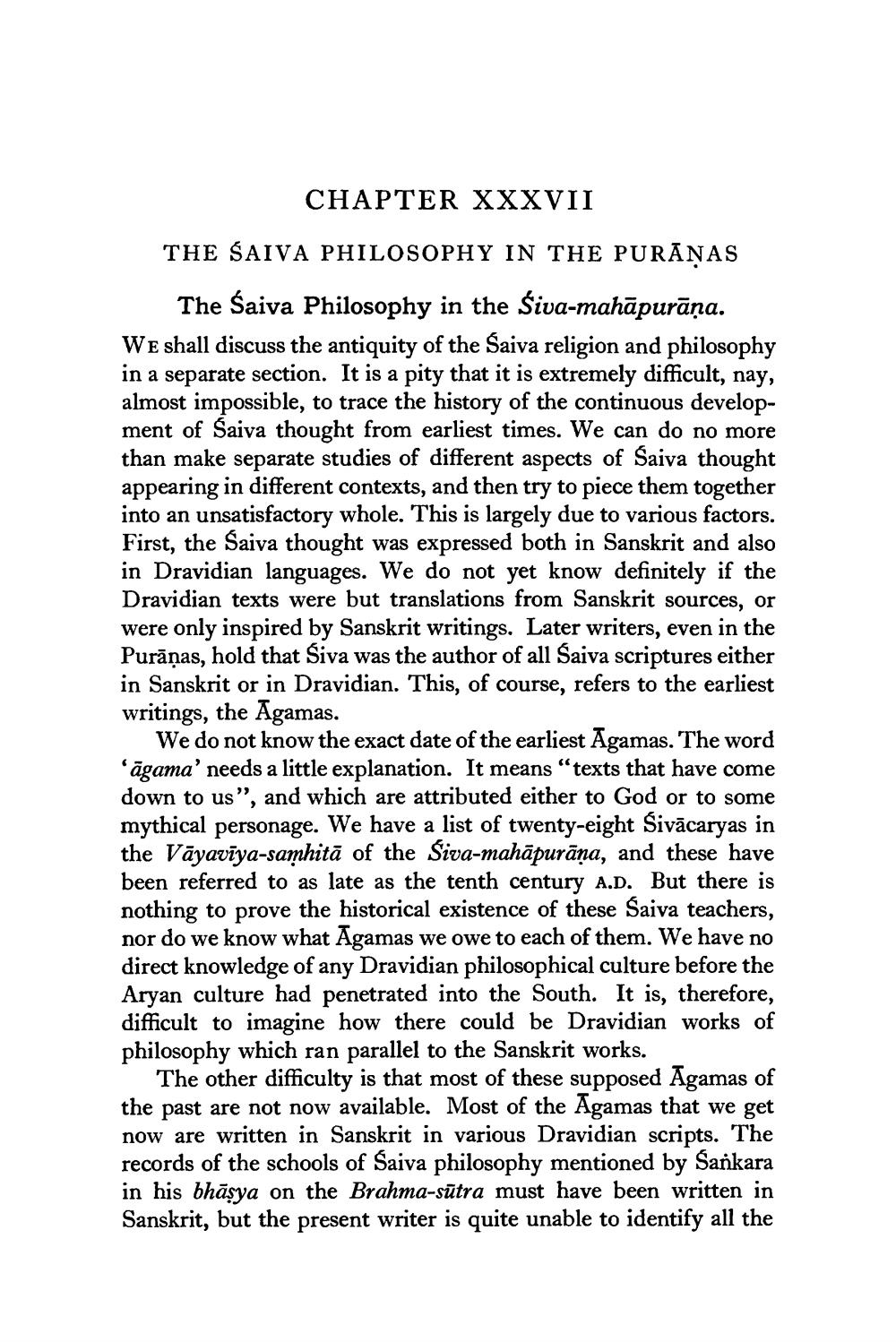________________
CHAPTER XXXVII
THE SAIVA PHILOSOPHY IN THE PURĀŅAS
The Saiva Philosophy in the Śiva-mahāpurāņa. We shall discuss the antiquity of the Saiva religion and philosophy in a separate section. It is a pity that it is extremely difficult, nay, almost impossible, to trace the history of the continuous development of Saiva thought from earliest times. We can do no more than make separate studies of different aspects of Saiva thought appearing in different contexts, and then try to piece them together into an unsatisfactory whole. This is largely due to various factors. First, the Saiva thought was expressed both in Sanskrit and also in Dravidian languages. We do not yet know definitely if the Dravidian texts were but translations from Sanskrit sources, or were only inspired by Sanskrit writings. Later writers, even in the Purāṇas, hold that Siva was the author of all Saiva scriptures either in Sanskrit or in Dravidian. This, of course, refers to the earliest writings, the Agamas.
We do not know the exact date of the earliest Agamas. The word ‘āgama' needs a little explanation. It means "texts that have come down to us”, and which are attributed either to God or to some mythical personage. We have a list of twenty-eight Sivācaryas in the Vāyavīya-samhitā of the Siva-mahāpurāņa, and these have been referred to as late as the tenth century A.D. But there is nothing to prove the historical existence of these Saiva teachers, nor do we know what Agamas we owe to each of them. We have no direct knowledge of any Dravidian philosophical culture before the Aryan culture had penetrated into the South. It is, therefore, difficult to imagine how there could be Dravidian works of philosophy which ran parallel to the Sanskrit works.
The other difficulty is that most of these supposed Agamas of the past are not now available. Most of the Agamas that we get now are written in Sanskrit in various Dravidian scripts. The records of the schools of Saiva philosophy mentioned by Sankara in his bhāsya on the Brahma-sūtra must have been written in Sanskrit, but the present writer is quite unable to identify all the




